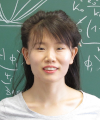Photoacoustic Tomography: Analysis and Numerics
Alexander Graham Bell, who is well-known for his invention of telephone, in 1880 also discovered the photoacoustic effect, and furthermore, invented “photophone”. This effect is the physical phenomenon that materials which are exposed to a short light pulse can respond by emitting a sound wave. Then he gives the name to this imaging method. Similar to ultrasonography, photoacoustic imaging is a method to visualise the interior of (typically small) biological probes by measuring ultrasound waves. In contrast to ultrasonography, the sound waves are hereby produced by illuminating the sample with a laser beam. Then in the 1980s, people started to realize that photoacoustic imaging combines the high contrast of optical imaging and the high spatial resolution of ultrasound imaging. At the same time, the underlying mathematical problem is also of great interest. Photoacoustic imaging presents a number of mathematical challenges ranging from the measurement design, through forward modeling, to efficient image reconstruction.
 |
 |
| A simplified version of the PAT reconstruction process | |
In this project, we will focus on the mathematical modeling in more realistic medium (for instance, inhomogeneous or viscoelastic), analyzing their properties, and designing new reconstruction methods, for example, making use of deep learning, since neural networks are able to capture essential a priori information from the set of training data.
FWF project T-1160: Photoacoustic tomography: analysis and numerics
Oskar Morgenstern-Platz 1, Room 07.126
1090 Wien, Austria
Phone: +43 1 4277 55775

